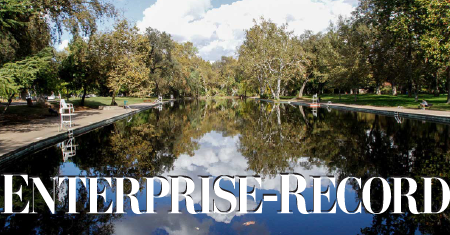The title is with apologies to John Milton and Yogi Berra, who surely would have something to say about the dual tragedies of the wildfires in Maui and the 2018 Camp Fire.
On Nov. 8, 2018, a massive wind-driven wildfire destroyed the town of Paradise, California. I experienced it firsthand, watching the plume from relative safety and later comforting friends and co-workers who lost homes, and nearly their lives. Eighty-five people died, some who I knew.
It was an unparalleled tragedy – until August 2023, when the town of Lahaina in Maui burned to the ground and at least 115 people died. The weather events, fire conditions, and human folly that led up to the Maui fire were nearly identical to what happened in Paradise. It reminded me of what British Prime Minister Winston Churchill famously said in a 1948 speech, “Those that fail to learn from history are doomed to repeat it.”
Some journalists and vocal green activists were quick to immediately blame “climate change” in both fires before the fire investigations were even started, much less completed. A detailed analysis by my colleague, meteorologist Cliff Mass, PhD., of the University of Washington shows that the Maui fire was a perfect storm of a high wind weather event, predicted days ahead, combined with a high fuel load due to dry invasive grasses; a similar scenario was the setup for the 2018 Paradise Camp Fire.
In both fires, power lines and high winds were the ignition source and the driver. In both fires, dry high fuel loads contributed to the intensity of the fires. In both fires, there were ample warnings in weather forecasts.
The other common denominator in both fires was the institutional failure of electric utility companies. Pacific Gas and Electric in California and Hawaii Electric (HE) both were pursuing green energy plans to satisfy green energy advocates and investors instead of paying attention to basic maintenance of their electrical power lines. The Paradise Camp Fire was blamed on PG&E ignoring maintenance on century-old power lines, which broke and sparked in a high-wind event. With video and data showing Maui power lines sparking during high winds, Hawaiian Electric is now the focus for lack of maintenance.
The Wall Street Journal, in their article “Hawaiian Electric Knew of Wildfire Threat, but Waited Years to Act,” noted, “Four years ago, the utility said it needed to do more to prevent its power lines from emitting sparks. It made little progress, focusing on a shift to clean energy.”
In 2019, HE stated the risk of fires and in a press release, outlining strategies to mitigate the wildfire risks from its aging power lines. The company noted that it was studying how utilities in California were dealing with similar wildfire threats. None of that was implemented. Meanwhile, the company focused on green energy goals, instead.
In June 2022, HE filed an application with the Hawaii Public Utilities Commission stating it wanted to spend around $190 million over five years upgrading its transmission infrastructure to be more resilient, but at the time of the Lahaina fire, that plan still languished, mostly unimplemented.
In an August 19 New York Times article, the risk and the delay were laid bare. “Hawaiian Electric has known for years that extreme weather was becoming a bigger danger, but the company did little to strengthen its equipment and failed to adopt emergency plans used elsewhere, like being prepared to cut off power to prevent fires. The utility knew it needed to upgrade its equipment but did not make changes that could have reduced risks of fires, energy experts said.”
The pattern of deferring maintenance and safety upgrades at the expense of green energy goals is the same reason contributing to the PG&E Paradise fire, and now the Maui fire. Literally, it is “déjà vu all over again.”
Perhaps it’s time to put aside populist green energy demands and create a company constitution to ensure that system maintenance and the safety of ratepayers is the top priority. Hopefully, with two tragic examples now in full view, other power companies will learn from this history, rather than repeat it.
Anthony Watts is former meteorologist at KHSL TV/ Action News Now. He does daily forecasts for KPAY and is also a senior fellow for climate and environment at the Heartland Institute in Chicago.
